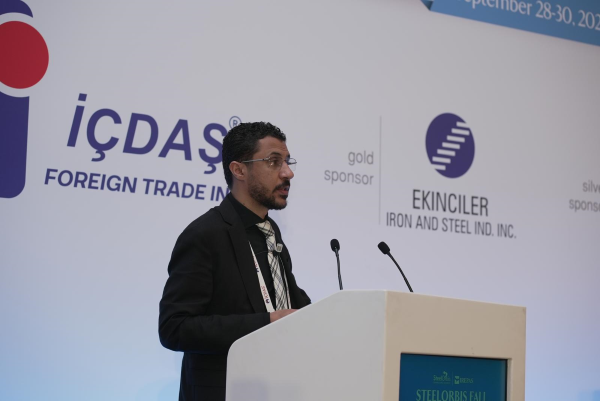At the SteelOrbis 2025 Fall Conference & 93rd IREPAS Meeting in Munich, Ramy Saleh, chief business development and sustainability officer at Egyptian steel producer El Marakby Steel, outlined the outlook for Africa’s steel market, stressing both opportunities and risks. He noted that Africa’s GDP growth is set to accelerate from 3.3 percent in 2024 to 3.9 percent in 2025 and 4 percent in 2026, with more than 20 countries expected to exceed five percent growth, including Ethiopia, Niger, Rwanda, and Senegal surpassing the seven percent threshold for inclusive development. Still, challenges persist: high inflation, debt stress, climate shocks and political instability weigh on performance, with East Africa leading growth, North Africa recovering and Central Africa lagging behind.

Africa’s FDI surged to $97 billion in 2024, up 75 percent year on year thanks to a $46 billion project in Egypt, while, even excluding this inflow, investment rose by 12 percent. North Africa saw the sharpest increase, while Nigeria and Uganda led on PMI resilience. As regards the steel sector, Mr. Saleh highlighted that Egypt dominates crude steel capacity and consumption (25% of Africa’s demand), while South Africa leads in flat products. Africa remains heavily import-dependent: 75 percent of exports are raw materials, whereas imports are mostly finished or semi-finished steel. As the El Marakby Steel official remarked, “Africa exports a wealth of raw materials but imports most of its flat steel, which highlights a major opportunity for developing flat steel production and even attracting relocations within the continent.”
Additional capacities are coming online, with major projects in Namibia, Nigeria, South Africa, Algeria and Egypt, together adding millions of tons between 2025 and 2027. Yet logistics remain a major bottleneck, with poor infrastructure and high transit costs reducing competitiveness.
Saleh also warned of the EU’s Carbon Border Adjustment Mechanism (CBAM), which poses a significant risk as 16 percent of Africa’s steel exports go to the EU. Depending on carbon pricing, implied tariffs could reach 11.3 percent, hitting South Africa, Egypt and Algeria hardest. He concluded by saying that Africa’s steel sector is at a turning point: infrastructure demand, AfCFTA integration and capacity expansion offer growth prospects, but debt, weak logistics and CBAM pressures could slow progress.